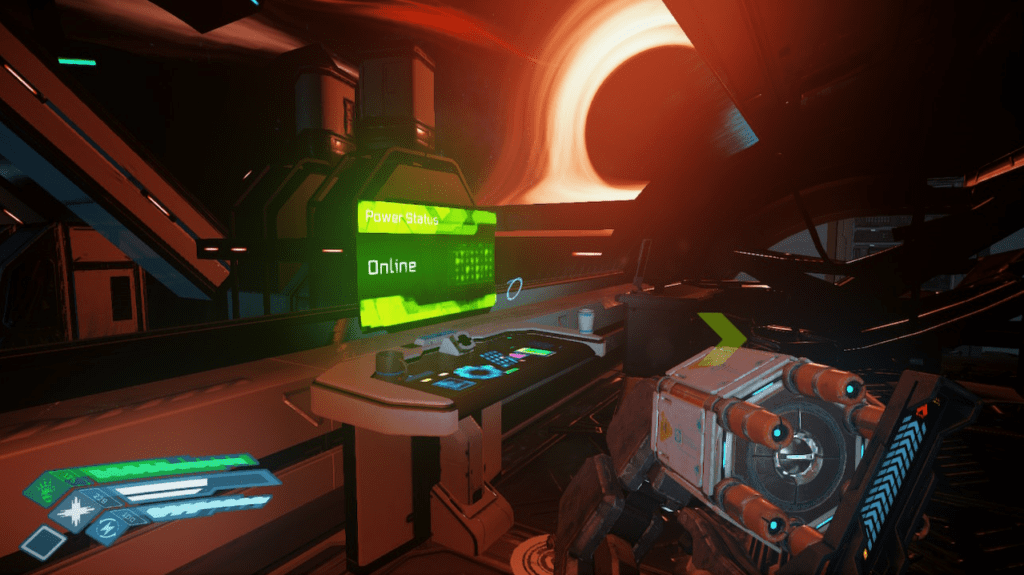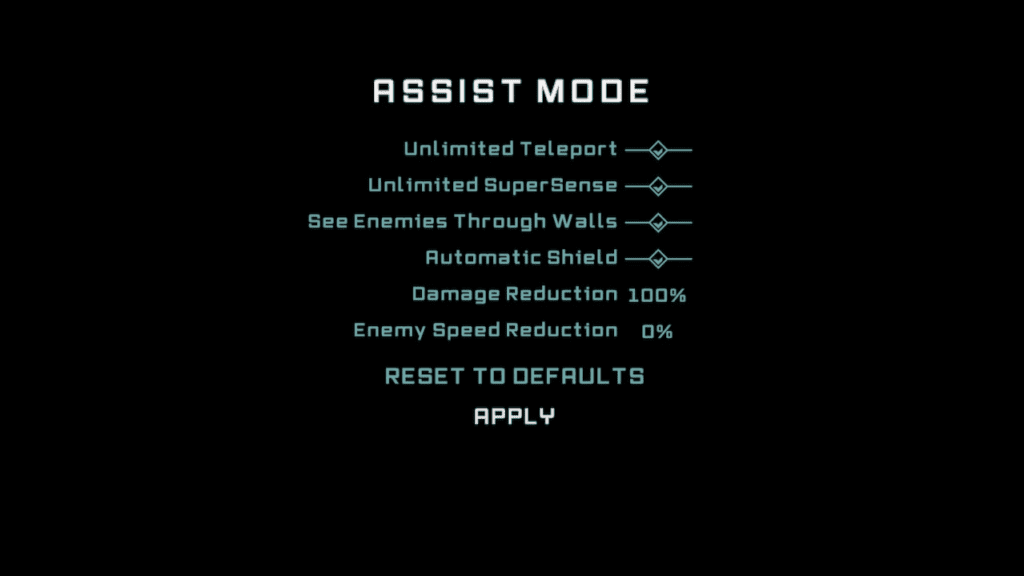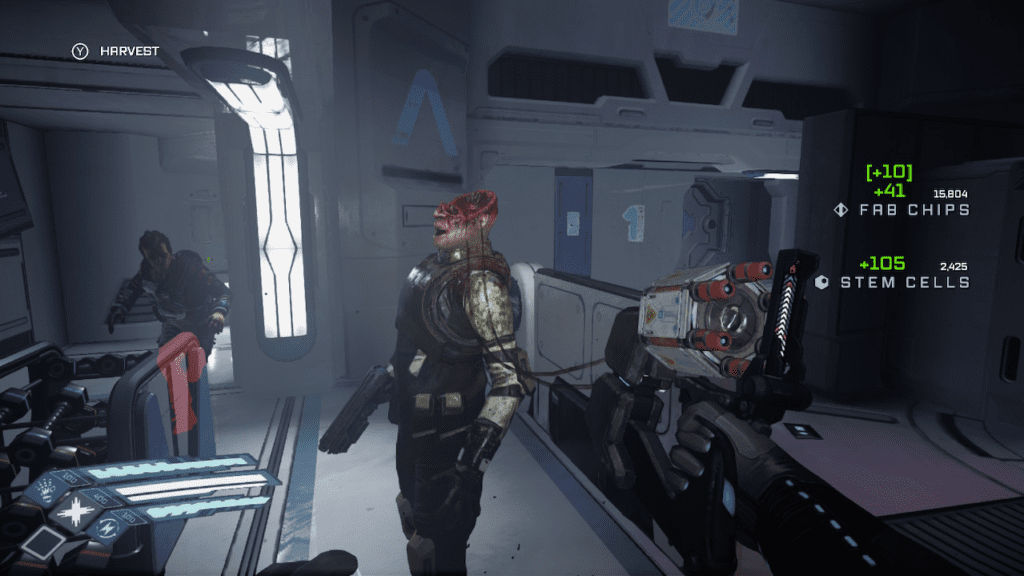Thanks to Firesprite Ltd for providing The GWW with a review copy of this game.
The Persistence is an amazing idea. From the moment that I finished the reveal trailer for the Nintendo Switch port I was hooked. Originally a VR title, it has been ported to consoles for those of us who haven’t taken the VR leap. If you haven’t heard of The Persistence – I’d highly recommend watching the trailer below – it’s a survival horror roguelike that has bits and pieces of BioShock, Rogue Legacy, and a touch of Dead Space. Considering that I loved each one of those games, I thought that The Persistence would absolutely suck me in. Unfortunately the fantastic promise of The Persistence is absolutely derailed by one glaring and difficult to overcome flaw…
…which I’ll get to in a minute. First, allow me to set the scene.
The Story
In The Persistence, you play as Zimri Eder – or, rather, her clone. See, everyone aboard your colony ship – the titular Peristence – is dead save Zimri and the Chief Engineer who is relying on you to save them both. This proves to be no easy task as the ship is mechanically screwed and floating towards a black hole. To make things tougher, the ships cloning machine is on the fritz and is spitting out mutated, unfinished clones faster than you can blink. It’s up to you to sneakily explore, craft, and kill your way through the objectives necessary to get the titular Persistence and her crew of one and a clone back to Earth safely.
The Gameplay
This is where The Persistence on Switch (and presumably other non-VR iterations) stumbles, falls, and breaks its nose against the coffee table. It’s painfully obvious that this game was a VR-first title that was ported to controller. The acceleration curve is more of a right angle. Move the right stick slightly and your gaze barely moves at all. Move the right stick completely and you’re head whips around uncontrollably. It makes exploring frustrating and difficult combat encounters impossible.
It’s insult to injury that you adjust the sensitivity in the “COMFORT OPTIONS” menu. This makes you think that you can at least calibrate controls somewhere close to comfortable. I was not able to. It vexes me that the way you adjust the sensitivity is by pressing A exclusively. The setting changes x0.2 each time from x0.2 to x2.0. The default is x1.0 and it feels… off, but in a way that made me think a minor adjustment would help. Moving closer to x2.0 is better, but the whippy mechanic once you hold the stick in one direction too long still exists. The lowest and highest settings are absolutely unplayable. Just in case you’re wondering, I eventually settled on x1.2 for both and was able to actually play the game.
I’m spending a lot of time on just how frustratingly awful the controls of The Persistence feel because it absolutely almost kills this game for me. I put the game down for a two days after playing for 30 minutes and almost felt the need to wait for a patch to continue this review. It’s that bad. However, if you can fight through the feel of the sticks… there are some interesting – if already explored – mechanics in this game that make for a potentially fun experience.

Sneaking around in The Persistance is something that you will do nearly one-hundred percent of the time in the beginning. As you take down enemies and loot containers throughout the ship, you will be able to upgrade your clone from weak to a pretty efficient killing machine. Whereas in other roguelikes death brings about quite a bit of starting over, The Persistance allows your clone to keep upgrades and passes them along to the next iteration.
Additionally, as you uncover more of the crew of the Persistence, you are able to clone their bodies with different skillsets. A few skills, such as being able to see enemies and their sight cones through walls for a short time, are absolutely essential to survival. Others, such as crafting material discounts, are nice, but not necessary. One, where you can teleport a short distance, seems to be a leftover from the game’s VR version. Though there are a few enemies where the skill is helpful. Dark Matter is what fuels some of these skills, and upgrading it early on seemed pretty intelligent to me.
Enemy types are mostly interesting and produce a nice variety to each room that you enter. There are a few enemies such as the Berserker that will absolutely wreck you early on until you learn a strategy for taking them down. This is because of the awful controls for looking and how slow your clone moves in the game.
There is no running in The Persistence. You’ll wish there was when you meet Weepers. These mutants are generally found in corners sobbing (as their name heavily implies)… upon seeing you, they scream and attack. Oh, and they can teleport. So that’s fun. I must say that Weepers genuinely scared me whenever I noticed them in a room. Later in the game, you find yourself facing waves of mutants flanked by a couple of Weepers. If the game controlled better, I’d be all over this challenge. Unfortunately, however, The Persistence doesn’t control well and the end-game encounters can be frustrating as hell.
There is, however, an “Assist Mode” which allows you to essentially nerf the game to the point of it being a walking simulator. It’s definitely not the way one should have to experience the game, but it’s nice that it’s included. I must admit that this feature absolutely allowed me to finish the game.
Here’s the deal, The Persistence features three enemies: boobytraps, mutant clones, and the damn controls. I decided about midway through that I could only comfortably handle fighting two of the three. Boobytraps are easy enough to avoid if you pay attention. Enemies are designed well enough that you can learn them and take them down… I decided that the controls were the one thing that I couldn’t defeat. Unfortunately, they were the one thing that I couldn’t “Assist Mode” out of the equation. Therefore, I decided to reduce the damage dealt out by enemies to 50% and gave myself unlimited Dark Matter. Once I felt like I was at least nominally competitive with the mutant clones… The Persistance was much more enjoyable. For the record: I lament having to employ “Assist Mode”… but otherwise I found the game simply too frustrating to endure.

The Graphics
Graphically, The Persistence on Switch holds up pretty well. At least, it isn’t a garbled mess. Compared to screenshots I’ve seen from other consoles, it definitely takes a bit of a hit on Switch. However, like most Switch ports, the portability of the Switch version may just be enough to palatable. One thing that I’ve noticed is that the Switch version seems to be lighter than the other versions. At least from what I’ve seen of screenshots. There doesn’t seem to be a way to adjust the gamma in the game, so there really isn’t a way to correct this. I also didn’t notice any framerate dips docked or handheld – it seems to be a locked 30 FPS. Overall, I’d say that the Switch port holds up pretty nicely.
The designs of the individual characters is both intricate and repetitive at the same time. Each enemy type’s character model is very interesting to look at, but there is not much variety in them. A Berserker looks like a Berserker, for example. It’s not incredibly important when one is charging at you and you’re wishing you were anywhere else on the ship, but it did strike me as a bit of a cash-in for a game this late in the console generation.

The Persistence itself is nicely done. While it’s certainly no USG Ishimura, it’s quaint and certainly serves its purpose to set the creepiness bar pretty high as you skulk around to avoid enemies. Doors slam in your face, vents are appropriately ominous, panels are hanging from their moorings… It’s pretty standard sci-fi horror.
The fact that the ship reorganizes each time you change decks or die is an interesting gameplay element. Even this many years after games like Rogue Legacy explored the idea. I checked deck maps often to see just how I was from the next objective before deciding how to proceed. For example: if I’m close to the next deck and my objective, I’ll find a few crafting machines, make a supply of firearms and other kit and then advance to the next deck. If I found myself on the opposite side of the deck from my example… I’d spend more time exploring, looting, and finding new strategies to use on enemies. It gives the game variety in a positive way.
The Audio
Naturally, The Persistence is chock-full of scary sounds. Creaking, the humming of lights, enemies muttering or screaming across the ship fill your ears as you explore. More than once, I found myself looking for materials in a cleared room only to hear a sound forcing me to double check the room. There seems to be a bit of audio compression. But I’m no audiophile and it may just be the way that the game sounds. Essentially, the audio isn’t as “clean” as I’ve experienced in other games. However, it most certainly services the scariness of the game.
The Conclusion
The Persistence is an amazing idea. I love the concept of the game and I even dig the way it looks and sounds. Which is why it is so incredibly disappointing to me that the controls are as bad as they are. I know that I’ve mentioned it ad nauseum, but this is a game first and foremost. The only time that I could escape the controls and focus on enjoying the rest of the game was when I employed a “game-breaking” cheat feature. Which is why I have to say that, unless you are thoroughly out of Switch titles or are an absolute masochist, I can’t recommend picking this game up right now. If there is a patch down the road that corrects the controls, then I’d say that this game is a great deal at $30. If you can get it on sale, even better.
